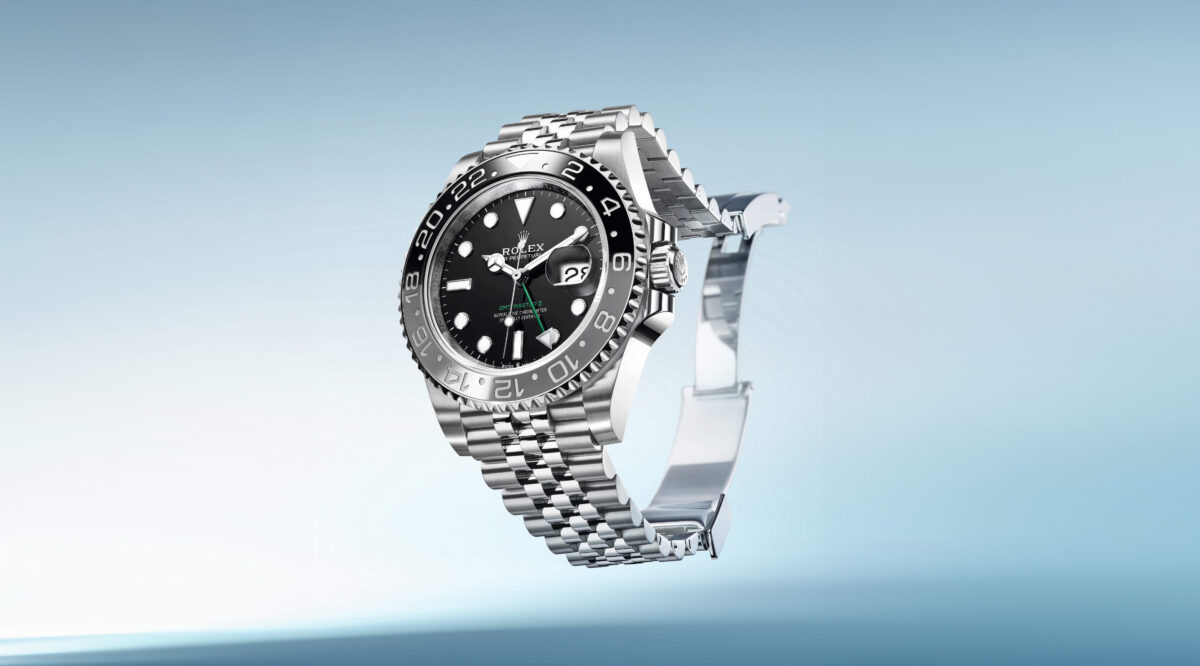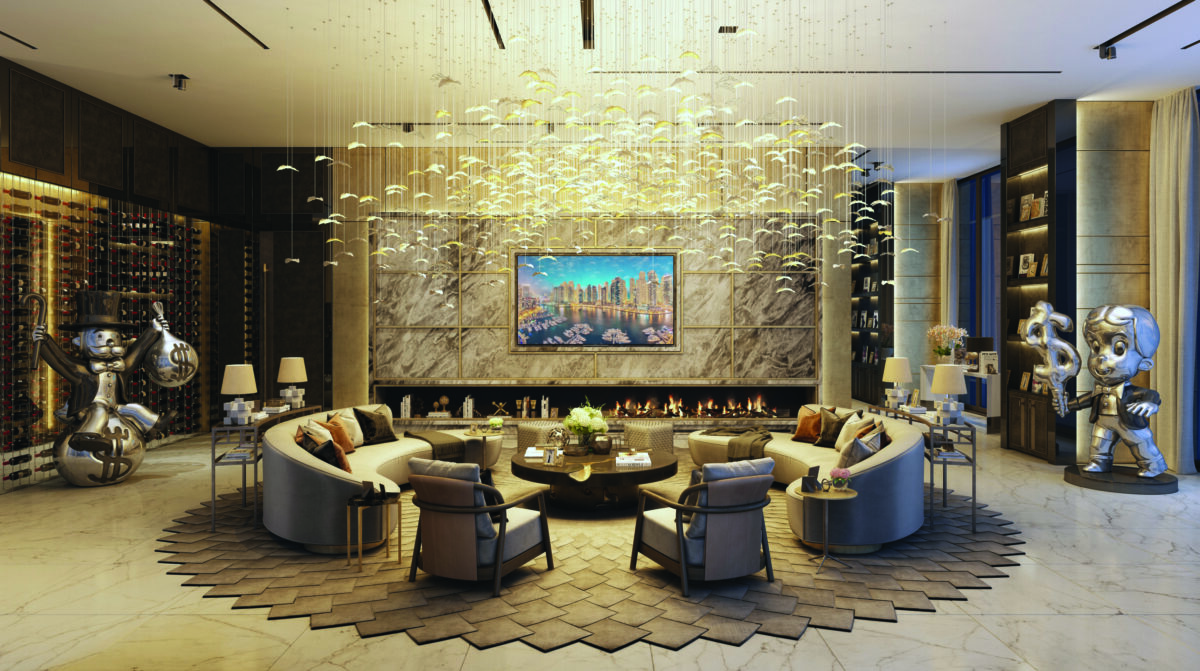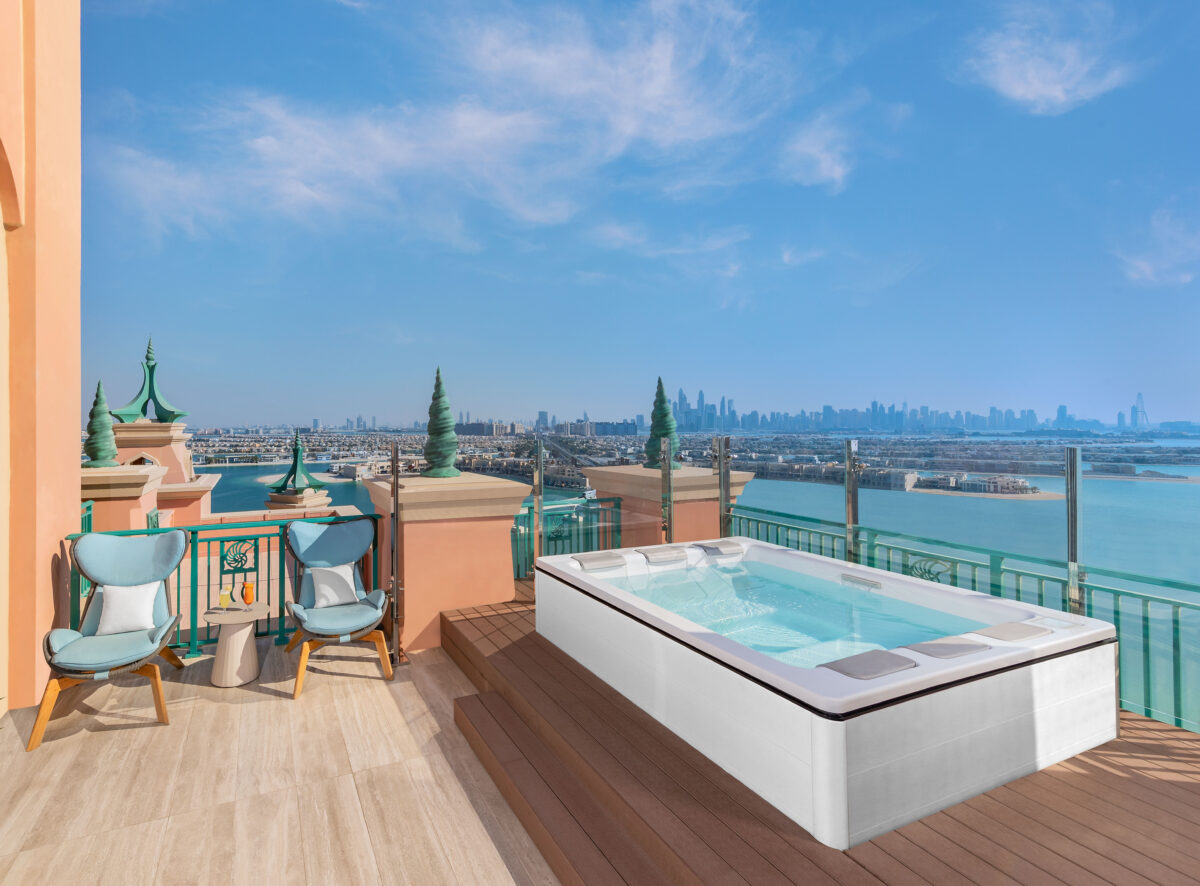Gucci, Gucci Coup – the Refashioning of Menswear
A new exhibition featuring Gucci looks at how our attitudes to menswear and masculinity are shifting
Widely considered to be one of the first pieces of Pop art, and by some the first piece, Richard Hamilton’s 1956 Just what is it that makes today’s homes so different, so appealing? is a collage featuring a couple in a room full of furniture and mod cons – TV, Hoover, reel-to-reel tape recorder. The inhabitants are a man and a woman, who the British artist referred to as Adam and Eve: they’re pretty much naked, she pulling a modelling pose on the sofa, while he, a bodybuilder (the cut-out picture was of the winner of Mr LA 1954) holds a large phallic lollipop.
Though this may well be Hamilton’s wry take on a post-war Garden of Eden, full of tempting earthly delights, the fact that his Adam presents a familiar image of masculinity, reaching back through the history of art, to Adams by Dürer, Reubens and Blake, and the statuary of Greece and Rome, and, of course, the revival of that aesthetic in the Renaissance – think Michelangelo’s perfectly toned Adam on the Sistine Chapel ceiling.
Here then is the template of masculinity for the Western world, embodied by representations of Adam, the first man. It’s a powerful idea, with centuries of reinforcement behind it, and in terms of fashion, we can see how conventionally the male wardrobe has striven to dress this archetype in ways that express his pre-eminence. From armoured breastplates to velvet smoking jackets to pinstripe suits, leather jackets and belted trench coats, we’ve inhabited a world where menswear says, ‘I’m a player’ – whether that be soldier, lover, biker or businessman.
Now, a new exhibition at the V&A aims to explore how this blueprint of masculinity has evolved and been challenged. Called Fashioning Masculinities: The Art of Menswear, and supported by Gucci, it features 100 looks and 100 artworks, telling a story of how artists, designers, tailors and customers have participated in the shifting conversation about the masculine through dress. Pieces from the V&A’s collection and loans, including Renaissance artworks, classical sculptures, film and photography, are juxtaposed with outfits by a range of designers – both famous and up-and-coming.
The exhibition is divided thematically into three sections. Undressed explores the idealised male body, from the antecedents of Richard Hamilton’s 1954 Mr LA, like the statues of the Apollo Belvedere and Farnese Hermes, to a Calvin Klein underwear ad. Overdressed looks at how the sumptuous, decorative and colourful wardrobes of the élite set out to express masculine power in a less muscular, but no less imposing way. The clothing featured in the oil paintings of Joshua Reynolds and Sofonisba Anguissola is seen to anticipate the extravagance of modern-day creations, witness a Dolce & Gabbana cape.
Finally, Redressed shifts the lens to the history of the suit – from the sober, black attire of British Regency dandy Beau Brummell, said to be the father of the garment, to the military influence of uniform on the civilian wardrobe, and the way in which youth subcultures – think Mods and Teddy Boys – have adopted the jacket and trousers combination. The exhibition closes with the suggestion that the suit as we know it is now being dismantled by the likes of designers JW Anderson and Lesiba Mabbitsela.
Significantly, Gucci is present throughout. And in many ways, its own trajectory as a brand speaks of how the idea of masculine dress has evolved over time. Because arguably, for many years the fashion and luxury goods house from Florence – inextricably linked to those Renaissance ideals of the male form – played its part in perpetuating the idea of man as a type of superman. And yet today, it is at the forefront of exploding that notion.
Currently celebrating the tail end of its centenary, Gucci was founded in 1921 by Guccio Gucci, who had been inspired to go into the business of making leather luggage in Florence by a stint at the Dorchester hotel in London working as a porter. Here he would have encountered the well-to-do, with their expensive cases and bags – the travelling men of the day, whose luggage contained wardrobes that expressed their status as people who could afford to journey around the world. If anyone was wearing the 1920s equivalent of the sumptuous garments in the Overdressed segment of the V&A’s exhibition, it was these visitors to London.
Over the years, Gucci developed into a fully-fledged fashion house and became the darling of the ancestors of those Dorchester guests, the Jet Set of the ‘60s and ‘70s. This was the era of Gucci tailoring and the distinctive horsebit loafer (launched in 1953). By the time Tom Ford appeared on the scene as Gucci’s in-house designer in the ‘90s, menswear had become part of the popular culture Richard Hamilton had depicted in his famous collage. Ford dialled the sexiness of the male wardrobe right up: a Gucci eveningwear outfit from Spring/Summer 2001 at the V&A show has a luxurious black jacket teamed with a tieless white shirt and black leather trousers.
But in 2015 things shifted dramatically. Decades of Gucci menswear riffing on a theme of slick, expensive, tailoring-based garments for the international playboy-type suddenly gave way to a new, startling, fresh perspective. It arrived care of Alessandro Michele, who had worked at the house for some 12 years and was suddenly given the reins as Creative Director. His first show for Gucci was of a men’s collection, for Autumn/Winter 2015-16, and it tore up the rulebook. His work since has had repercussions for how men dress that we are really only just beginning to understand.
Michele’s idea was to adopt tropes of the traditional male wardrobe, but to adapt them to a vision of contemporary masculinity that is consciously inclusive, celebrating individual freedom of choice, moving beyond the binary and embracing diversity. Adam is now no longer required to be a ‘man’ in how he dresses, though the building blocks of what he wears may well still reflect the long-established conventions of the Undressed, Overdressed, and Redressed wardrobes.
So, we see a Gucci fine wool gaberdine bonded military trench coat paired with beret, jeans, sandals and a shirt with a floral-print bow at the neck from Michele’s first collection, taking the Redressed idea in a bohemian direction. A Spring/Summer 2017 flower jacquard evening jacket with embroidery, white poplin shirt, pink faille bow tie, flower jacquard trousers and green loafers suggests that the Overdressed approach lives on, as does a blue velvet suit with white buttons from 2019-20’s Pre-Fall tailoring collection, as worn by Harry Styles. But the notion that this sort of opulent outfit denotes traditional masculine status is then entirely subverted by an image of the same Mr Styles in a custom ‘womenswear’ soft tulle gown with lace inserts and ‘men’s’ tuxedo jacket for US Vogue’s December 2020 edition.
Indeed, it is perhaps this depiction of a male pop star, who, as with so many pop stars before him, is an object of desire for hundreds of thousands, if not millions, comfortably and happily wearing a dress that best shows where Gucci has led us to. We should be grateful. We have had our minds opened. And our notions of masculinity literally refashioned.
This has been done in the spirit of pop culture. Richard Hamilton would surely have got it.
By Peter Howarth



